A forgotten village in the Garhwal region of Uttarakhand, Kalap is one of India’s best-kept secrets. The natural beauty, the warm people, and the mouthwatering local flavors will make you fall in love with it.
Kalap is a pristine village in the upper Garhwal region of Uttarakhand that was developed as a sustainable eco-tourism zone by Tons Trails, a social enterprise. Being situated at 7,800 feet amidst the virgin pine and deodar forests, the weather here is always pleasant. Kalap overlooks the roaring River Supin, offering the most magnificent landscape.
Enjoy a meal of traditional Garhwali architecture, relax amidst greenery, or go hiking for a wonderful time away from all the chaos back home. The views of the snow-clad Bandarpunch range will mesmerize you.
Keep reading to know more about Kalap, things to do, where to stay, why you must visit, and its legends.
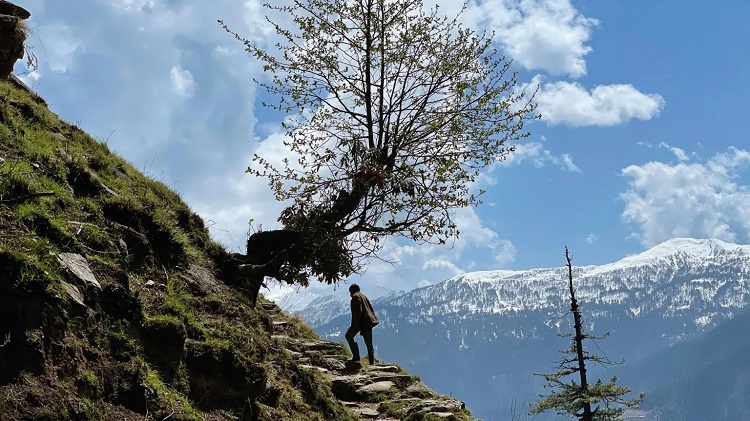
Why is Kalap famous, and why should you visit?
Kalap an eco-village, is a lesser-known destination in Uttarakhand. Besides this, many people don’t know it is a land of many legends. For example, the Tons River Valley is said to be the birthplace of the Mahabharata or the ‘great story of the Bharata’. The Pandavas and the Kauravas are believed to have descended from this valley, and the people living here say they have traced their lineage to one of these clans. Fascinating right?
Besides, Kapal in Tons Valley Uttarakhand is a remote village, so it is untouched by mainstream tourism and, therefore, has fewer crowds. Consequently, you can spend quality time in nature with loved ones and get time to interact with the locals and their daily life. In addition, not being connected to any roads head and far gives rise to a number of trekking trails, ideal for those who love being outdoors.

How do people live and make a living in Kalap? What will you experience?
Life is harsh in Kalap. But this is where the beauty of Kalap lies. The rugged locale and lifestyle allow the locals and visitors to explore the offbeat paths that are truly connected to the essence of life. The local community lives a life of minimalism and sustainability, which could be great learning for tourists.
The main occupation of people in Kalap is agriculture, with its terraced fields growing beans, potatoes, millets, and wheat. May to October is their growing season; other occupations are rearing sheep and goats. When winter comes, heavy snowfall comes with it and covers the entire village with 3 to 5 feet of snow. This looks absolutely stunning but is a significant loss of agriculture.
Further, the trekking trails in Kalap are well-trodden by seasonal nomads and are not explored by outsiders. So you will be overwhelmed by the panorama they offer and the scent of pine, wild lavender, and deodar in the jungle.
Besides living a harsh life, the people of Kalap will welcome you with open arms and warm hearts. They will share fun and old stories of the place and their life with you, giving you a sense of closeness with them. You will go back home with Kalap in you for sure!
Things to do in Kalap Uttarakhand
Besides relaxing and soaking in the breathtaking beauty of Kalap, there are numerous things to indulge in for fun and exciting times. They are listed below.
Enjoy the steaming hot, traditional food of Kalap

Steaming mandava with spicy bhang jeera (seed of the mint family) chutney on the side makes your mouth water. They are made from finger millet and wheat dough in small balls, then flattened in the palm and stuffed with roasted bhang jeera and jaggery. Then they are dipped into boiling water. Along with this, they serve “Goshua,” a local delicacy. But it is important to note that most villages in Uttarakhand have access to bigger supermarkets in the cities. Thus, this brings chemicals and pesticide-filled food into the village, ruining its authenticity. Kalap has, however, escaped most of this transition. For a more insightful tour, book a local tour to know about what grows in and around Kalap.
Trek along the rocky paths that leads to stunning viewpoints
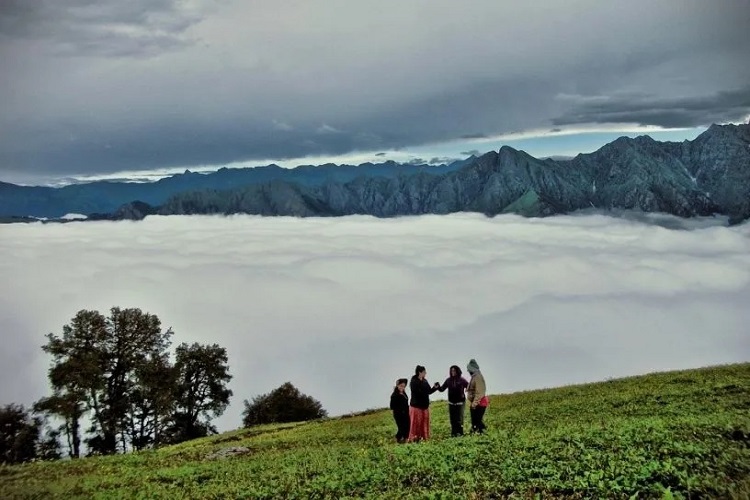
Kalap offers excellent trekking trails that take visitors to scenic viewpoints, offering breathtaking vistas of the Garhwal Himalayan range. Witness the fresh snowfall during winters under the blue sky that etches a memory for a lifetime in your mind. And if visiting in summer, walk along the trodden paths wearing comfy shoes and hear the silence of the jungle that soothes one’s senses. You will come across many streams, wild plants, and herbs with medicinal properties. It is best to take a local naturalist with you as they can guide you with the types of plants available in the region.
Watch the wildflowers and medicinal plants that dot the landscape

Many plants grow in and around Kalap that have excellent healing properties. For example, some roots can heal eye ailments, grass can fix bleeding wounds in cows, and some herbs lower the ache of a broken nose. In addition, the leaves help to relieve stomach heat and pain in the joints, and plants also have the property to induce poop and treat kidney stones. Wildberries are rich in calcium; a shrub can help you start a fire without a matchbox or lighter! How cool is that?
Legend Associated with Kalap
To know the ins and outs of Kalap Village Uttarakhand, you must know the legend associated with this place before you plan your trip. This makes your Kalap tour more enjoyable. So as per the legend that is some 200 years old, a shepherd from Himachal was grazing his goats in the soaring mountains when he crossed the high pass from Sangla towards Kalap. Being delighted to find an ancient deodar forest, plenty of water, and rich soil from the mountain spring, the shepherd settled here with his family.
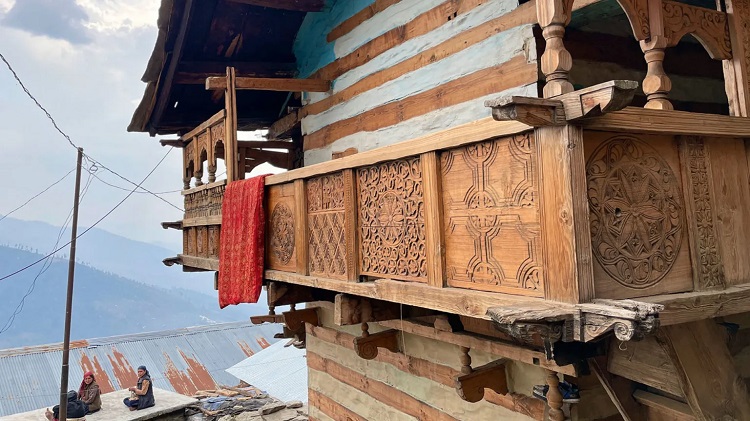
This helped grow the village population to about 100 households, where most homes were built in the traditional koti banal architecture style. The houses had four to five storeys of flat stones thrust into one another without any cement. However, the windows and wooden doors will be decorated with intricate wood carvings called “likhai”. Though most houses in Kalap are now one-storeyed made with mud, cement, slate, or wood, Likhai is an ancient art of wood carving that can still be seen in old homes in Kalap.
How to reach Kalap for a relaxing trip in nature?
Dehradun is the nearest city with a significant airport or railway station to reach Kalap. Kalap is only 192 km from Dehradun. Taxis are readily available and take about 6-7 hours. The hike to Kalap Village begins from Motwar Village, which takes another 4 hours for an average hiker. This also includes crossing a river. So be prepared for that.
Where will you stay in Kalap?
The founder of Tons Trails, Anand Sankar, has many camping and homestay facilities for tourists visiting Kalap for exploration. Other than these, Hotel Kalpa, Hotel Kalpa Deshang, and The Grand Shamba-La are affordable places to stay in Kalap with decent amenities. Also, check out multi-day tours with Indian Holiday Uttarakhand packages for great sightseeing in Kalap Uttarakhand.
If Kalap is this beautiful, has a rich history, soothes one’s senses, and offers impressive trekking trails, why are you waiting? Come this summer to Kalap for a relaxing and meaningful journey that will be nothing less than a once-in-a-lifetime experience. Hike in the dense forests with nature sounds and bathe in the streams that have healing properties. Interact with the locals that might form a deep connection and attend the festivals for an insightful experience. Indian Holiday offers Uttarakhand tour packages that you can design as per your needs and add Kalap eco-village for a memorable time.

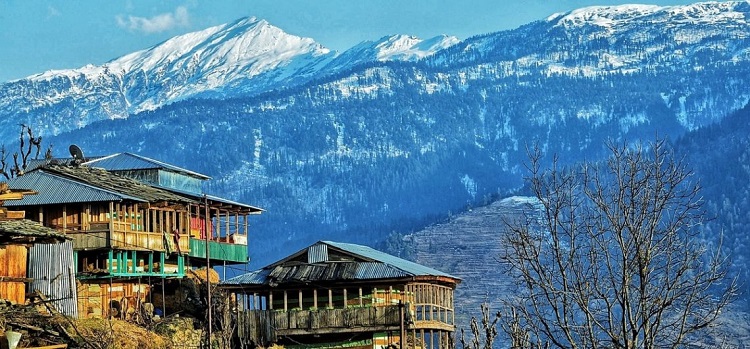
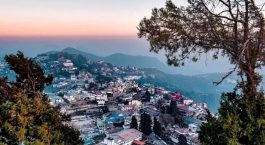

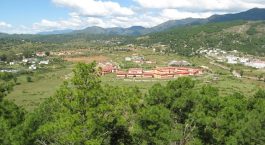
Leave a Comment